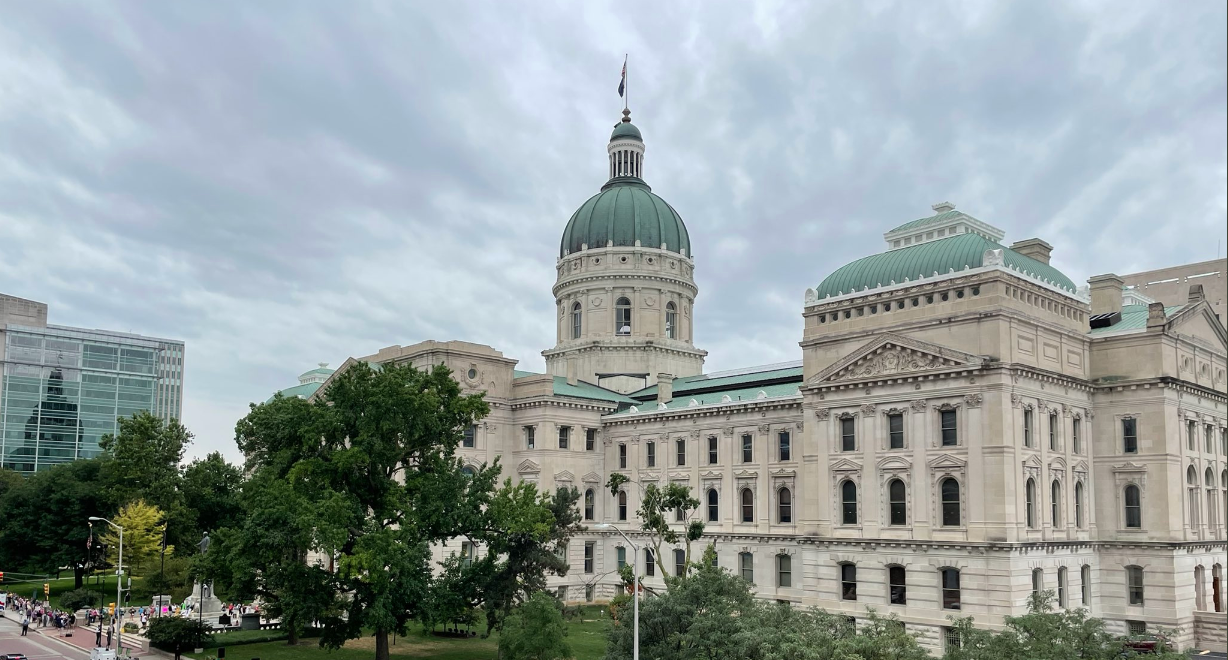INDIANAPOLIS — Oil prices have dropped by about 20% from last week, yet gas prices in and around Indianapolis are still hovering at about $4 a gallon.
So, what gives?
One expert says the drop in oil prices per barrel is due to the market reacting to sanctions against Russia, the same reason the price was raised in the first place.
“The sanctions are not impeding the flow of Russian natural gas and oil. It's impeding the direct importation into the United States," said Dean Forman, chief economist for the American Petroleum Institute.
Originally, global markets weren't sure if oil production was going to be halted in Russia because of the sanctions. If it was, it could have created shortages of gasoline in certain parts of the world.
According to data from API, American oil companies are still producing one and half million fewer barrels of oil than they were in late 2019.
"It's not that the drilling isn't happening. It has picked up considerably this year, but it's taking longer than expected,” said Forman. “The companies have had to fix a bunch of things to deal with the aftereffects of the pandemic. Then also look at the longer-term investment horizon. When you are making investments that have to last 15-25 years, it's hard when the administration is signaling that they want to move away from your product."
Forman is referring to the Biden administration’s commitment to greener and cleaner energy like more solar and wind production. Oil markets also react to investment in those types of energy. But another economist says many renewable energy sources aren't cost-effective at this point in time.
"Until those production costs come down and we have more infrastructure, I mean we are tied to fossil fuels for the near future,” said Larry Belcher, dean of the School of Business at the University of Indianapolis. “Until those technologies become cheap enough that they can be mass-produced."
Policy aside, API says there is another factor that can play into what you’re paying at the pump. API says 95% of gas stations are independently owned and operated. Because of that, lower fuel costs for consumers could take time.
"They set their own prices,” said Forman. “When they do that, they are very much aware of the replacement cost for each truck of fuel that's going to come in. The prices tend to go up on that basis. Often it takes local competition to eat those prices back down and that takes time. “
During this increase in gas prices, the questions surrounding how much consumers pay in taxes have come up. Data from API shows that 15% of the total price of a gallon of gas is both federal and state taxes.
Here in Indiana, the sales tax is seven percent of whatever the average price for a gallon of gas is in the state. So, for the month of march Hoosiers are paying at least 18 points 4 cents per gallon in gas taxes.
A breakdown of how that works is available on the Indiana Department of Revenue's website. For more information on national oil and gas data, visit the American Petroleum Institute's website.
-

Indiana Lawmakers face challenge as revenue forecast predicts budget shortfall
Indiana lawmakers have about a week left to pass a balanced budget, a task made more difficult by a revenue report projecting a shortfall of over $2 billion over the next two years.
Fishers' Police state-of-the-art forensics tech looks to improve public safety
The Fishers Police Department has launched a cutting-edge crime lab equipped with advanced forensic technology, designed to expedite investigations and enhance public safety.
Indy clinic begins Autism Diagnostic Evaluations to help cut down on wait times
A local clinic is providing a new service to help cut down on wait times for families seeking evaluations to find out if their child is on the autism spectrum.Ball State ends DEI programs to comply with President Trump's executive order
Ball State University's board of trustees approved a resolution to revise or end policies and programs relating to DEI to comply with President Trump's executive order.




